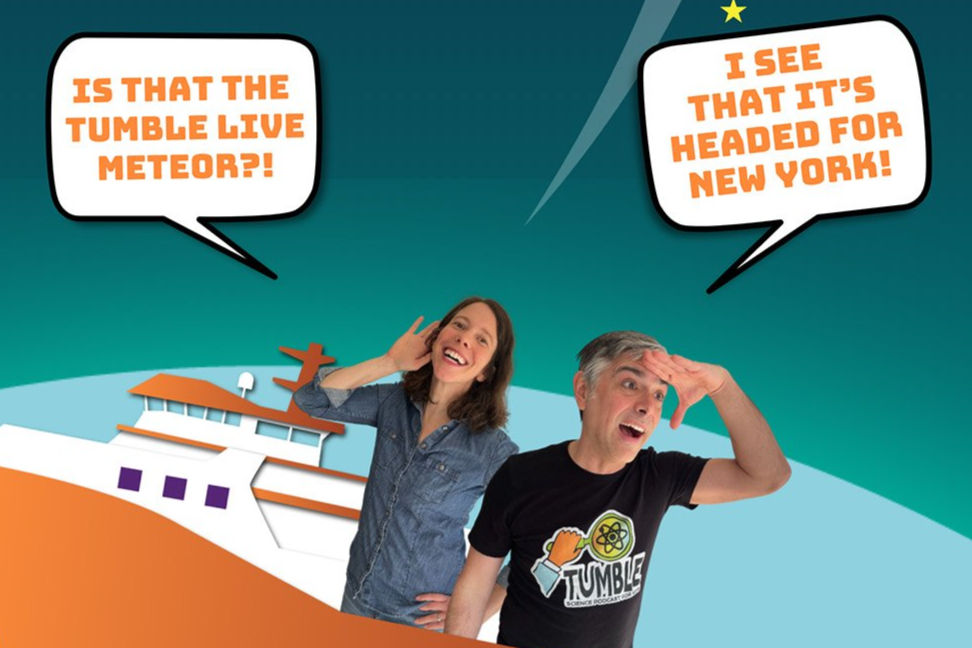The Science of Candy Land | Tumble Episode
- Lindsay Patterson
- Oct 30, 2020
- 3 min read
Updated: Dec 26, 2025

EDUCATIONAL RESOURCES:
NGSS Standards:
PS
Happy Halloween! We’re headed to Candy Land, a sugary laboratory where mathematicians found a mysterious candy dagger appear - over and over again. So gather up your candy box, and let’s discover out why mathematicians are studying candy to understand the real-life landscapes around us. Mathematician Leif Ristroph shares how he stumbled into making sweet experiments.
MAKE RESEARCH GRADE CANDY

It's not every scientific paper that includes a recipe for candy! Above is a screenshot Leif sent us from one of his papers. It describes the recipe as:
8 parts table sugar (regular sugar)
3 parts light corn syrup
2 parts water
Heat to 302 Fahrenheit (150 degrees Celsius) and make sure that ingredients are fully dissolved. (If you need more guidance, use this basic method)
Leif gave us this secret to "bubble-free" candy:
"The key to eliminating bubbles is to let the casting occur over a long time. We did this by providing lots of insulation around the candy as it sets and sometimes even housing the mold within a heated enclosure. In a kitchen, this could be done by covering the mold with bunched up aluminum foil, for example. The idea is to extend the hardening process over hours so that the bubbles can rise up and out. Lollipop manufacturers are not so patient, of course, which is why lollipops are so bubbly!"
SEE THE CANDY SPIKES
All below images courtesy of the NYU Applied Mathematics lab.

Did you wonder what a candy spike really looks like? This is it! Leif's lab created a method to make many spikes out of a block of "mock rock" - just as stone forests would have been created.
Below, you can see a time-lapse video of how the spikes or "pinnacles" were made.
Here's a description of the video from Leif's lab: "The block starts out with internal pores and is entirely immersed under water, where it dissolves and becomes a “candy forest” before collapsing."
Here's an image with the neat laser tricks that Leif used to show the flow of the candy and water, as it dissolved. That yellow spike is the candy.

This is the scientific caption from the lab: This photograph shows a single candy pinnacle dissolving into water. Microparticles are added to the water to trace the flow, and a green laser sheet is shone from above. The time-exposed photograph shows the flows that are generated as the heavy, sugar-rich fluid near the body sinks downward under gravity.
As we mentioned in the episode, Leif also helped create a "Mathy Candy Crush" model to compare to the dissolving candy. Here's what that looks like.
This video shows a side-by-side comparison of the shape development of a single dissolving pillar from experiment and simulation. Both methods show that an initially smooth apex is carved into an ultra-sharp spike.
To read more about the study itself, click here.
WHAT DOES A STONE FOREST LOOK LIKE?
Have you heard of a stone forest before? We hadn't! They're rare, but fascinating landscapes.

This one, above, is the stone forest we talked about in our episode. It's in Madagascar and called "Tsingy" - which translates to a place where you can not walk barefoot.
Learn more and see the most incredible images of it here.
The stone forest below is in Yunnan Province in China. It's called Shilin. More information is here!

Read more about the connection between candy and stone forests in this Atlas Obscura article. about Leif's work.


